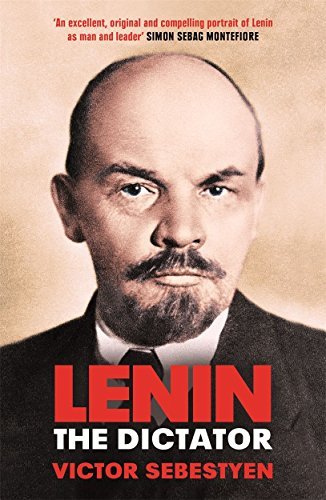What do you think?
Rate this book


608 pages, Paperback
First published February 9, 2017
...in a real revolution the best characters do not come to the front. A violent revolution falls into the hands of narrow-minded fanatics and of tyrannical hypocrites at first...such are the chiefs and the leaders. The scrupulous and the just, the noble, humane, and devoted natures...may begin a movement- but it passes away from them. They are not the leaders of a revolution. They are its victims...Throughout this biography, Sebestyen subtly but firmly insists on his subject's historical continuity with both Russia's Tsarist past and its present. In this view, Lenin and the Bolsheviks were anomalous in Russian history only due to the patina of Marxism and atheism- but in the most essential aspects of rule, they were not anomalous at all. Lenin, on his second day in power, began to censor the press, while his wife Nadezhda set about purging libraries of such writers as Descartes, Kant, Schopenhauer and William James (we learn that Lenin hated Dostoevsky for being 'grossly, dangerously reactionary', as well as 'totally vile', but I can't help wondering if he ever read Besy/Demons, whose main character is a Lenin-like conspiratorial leader whom Dostoevsky based on Sergei Nechaev...the nihilist and revolutionary who, in turn, was a great influence on Lenin)- policies that wouldn't have seemed unusual under Nicholas II. Lenin established a secret police apparatus, the Cheka, who, though they were more brutal, based their methods on the Tsar's Okhrana (and later became the NKVD and then the KGB). He used terror and starvation against political opponents. A cult of personality was established around him, which he professed to dislike, but never took pains to prevent. After the attempt on Lenin's life, Zinoviev, Sebestyen writes, "supposedly an atheist...compared Lenin to Jesus Christ and said he was 'leader by the Grace of God'- as Orthodox priests had referred to the Tsars."
Overnight the [February] Revolution had brought political freedoms never before known in Russia- and hardly ever since. People could say, write and read what they wanted, something they could not do a year later- nor their great-grandchildren a hundred years later.In the days leading up to November 7th of last year, the 100th anniversary of the Bolshevik Revolution, I read a few articles that attempted to explain why the current Russian government was not treating the event with more fanfare. It was pointed out that, well, Lenin was a revolutionary after all, he brought down the state, and that's not the kind of thing that any government wants its people taking to heart. But on the other hand, Lenin fits comfortably into the historical narrative of modern Russia's leadership. As Sebestyen puts it,
The clear signal [in preserving Lenin's tomb] is to show historical continuity, the idea that Russia still needs- as it has always needed- a dominant, ruthless, autocratic leader, a boss, in Russian, the Vozhd.This is what makes Lenin's life a tragedy- that he insured the continuance of the injustice he claimed to have been fighting against all his life, and in fact made things much worse. And this is even before we consider what Sebestyen, and it's hard to argue, calls Lenin's greatest sin- leaving a man like Stalin in position to take charge of the country.
Vienu metu, jau išaušus, partijos nariai ėmė diskutuoti dėl naujos vyriausybės sudėties. Leninas svarstė, kaip ją reikėtų pavadinti.
- Neturėtume jos vadinti ministrais, - tarė jis. - Tai atstumiantis, nuvalkiotas žodis.
- Gal komisarais? - pasiūlė Trockis. - Nors jau yra daug komisarų. Gal liaudies komisarais?
- Liaudies komisarai. Man tai patinka. O kaip vadinsime vyriausybę?
- Liaudies komisarų taryba.
- Nuostabu, - šūktelėjo Leninas. - Šiuose žodžiuose justi revoliucijos kvapas.
Our morality is new, our humanity is absolute, for it rests on the ideal of destroying all oppression and coercion. To us, all is permitted, for we are the first in the world to raise the sword not in the name of enslaving or oppressing anyone, but in the name of freeing all from bondage... Blood? Let there be blood, if it alone can turn the grey-white-and-black banner of the old piratical world to a scarlet hue, for only the complete and final death of that old world will save us from the return of the old jackals.’